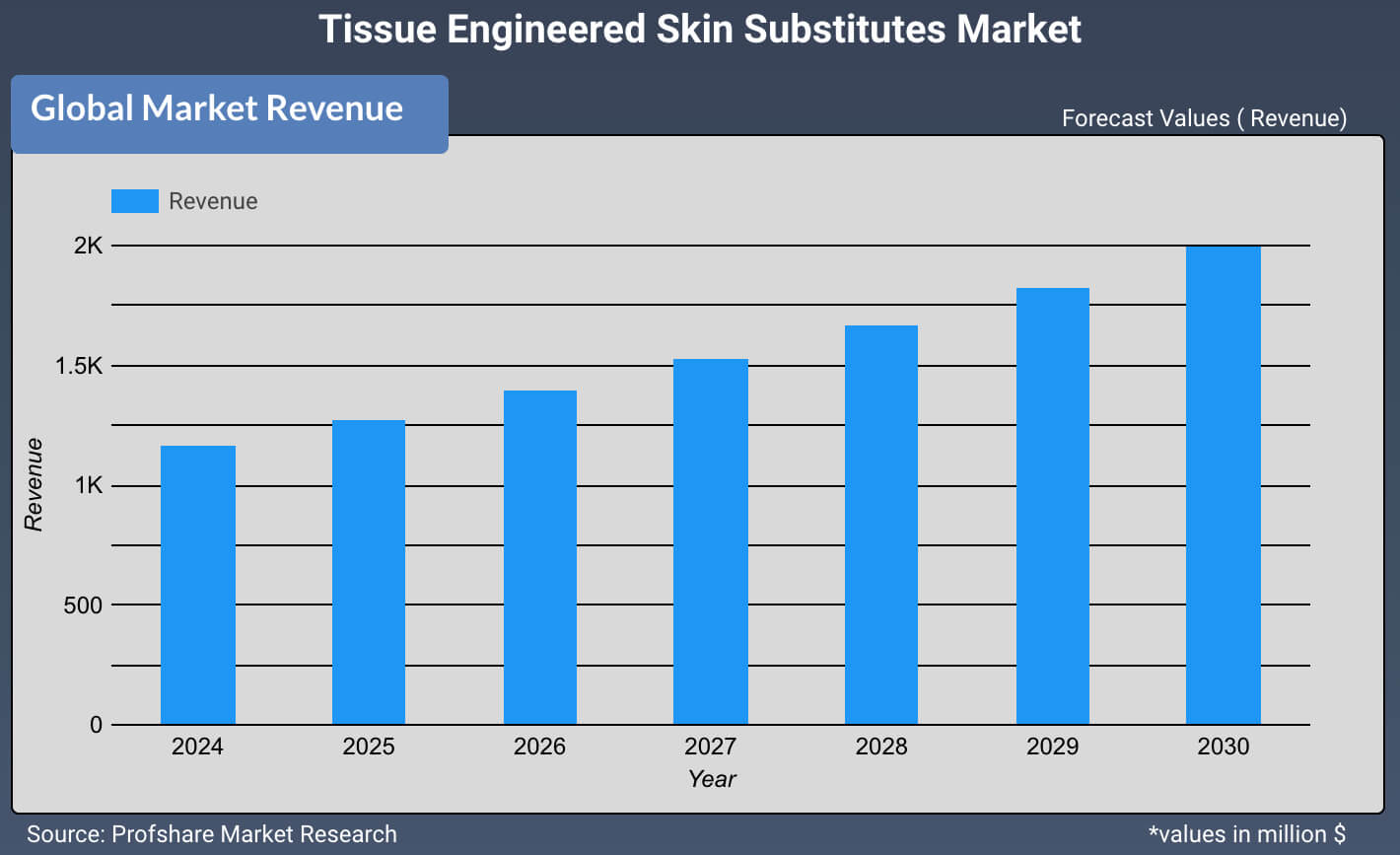Nowadays Chronic wounds and extensive skin loss have become serious problem globally. Even if injured epidermis is normally able to self-renew, deep injuries can cause negative regulation of the wound healing cascade, leading to chronic wound formation. Skin-autografting surgical procedures are often limited by the poor availability of healthy tissue, whereas the use of non-self-tissues for allografts presents some severe risks. Tissue-engineered skin substitutes have recently become viable as a suitable alternative to auto- and allografts.

However, biologists, biochemists, and technical engineers are still struggling to produce complex skin substitutes that can readily be transplanted in large quantities. The ambitious goal is now to construct a dermoepidermal substitute that rapidly vascularizes and optimally supports a stratifying epidermal graft on a biodegradable matrix.Skin substitutes can be broadly divided into cellular and acellular devices, yet within these categories, each product has its own unique composition and mechanism for promoting healing.
Here we summarize the characteristics and indications of cellular and acellular matrices commonly used in wound care with the most evidence supported by randomized control trials and prospective studies. This review aims to provide dermatologists and other wound care clinicians with a helpful guide on how to approach skin substitutes, from preparing the wound bed for application, to making the proper selection for patients' individual wounds.
Tissue-engineered skin substitutes represent an efficient way of meeting the deficiency in donor-skin-graft supplies. They can protect damaged regions from fluid loss and contamination and promote release of cytokines and growth factors at the wound site, accelerating the wound-healing processes. They also act as a temporary protective cover of the wound bed during healing. More complex 3D models have recently been developed that use cocultures of different kinds of cells, with the goal of enhancing engineered tissues’ similarity to their natural counterpart.
Melanocytes have been introduced to recreate the natural pigmentation process in vitro. Different skin combinations of keratinocytes and melanocytes from Caucasian and Negroid donors confirmed that pigmentation is under the control of melanocytes, whereas keratinocytes play an antioxidant defensive role. Sunlight can cause erythema and melanoma; tissue-engineered skin substitutes may be used as easily manageable in vitro systems in studies aiming to produce new photoprotective agents.
Several commercially available models of engineered skin substitutes have now been developed, which apply different techniques and use different cell sources. CeladermTM (Advanced BioHealing, New York, NY, USA) is representative of this model, and its efficacy has been validated in clinical trials for treating venous leg ulcers. Alloderm (LifeCell, New York, NY, USA) is a commercially available decellularized tissue-engineered skin substitute consisting of a cell-free matrix permanently incorporated into the wound bed. After application, Alloderm is colonized and vascularized by underlying cells; however, in some cases, it induces immunogenic rejection.
Tissue Engineered Skin Substitutes Market: Procedure Type
Tissue Engineered Skin Substitutes Market: Applications
Tissue Engineered Skin Substitutes Market : Competitive Analysis
Report includes accurate analysis of key players with Market Value, Company profile, SWOT analysis. The Study consists of following key players in Tissue Engineered Skin Substitutes Market:
Geographical analysis of Tissue Engineered Skin Substitutes Market:
Global Tissue Engineered Skin Substitutes Market Report delivers a comprehensive analysis of the following parameters:
| Parameters | Details |
|---|---|
Base Year | 2025 |
Historical Data | 2020-2025 |
Forecast Data | 2026-2032 |
Base Year Value (2025) | USD 1071.26 million |
Forecast Value (2032) | USD 1996.35 million |
CAGR (2026-2032) | 9.3 % |
Regional Scope | North America, Europe, Asian Pacific, Latin America, Middle East and Africa, and ROW |
Tissue Engineered Skin Substitutes Market was valued at around USD 1071.26 million in 2025 & is estimated to reach USD 1996.35 million by 2032.
Tissue Engineered Skin Substitutes Market is likely to grow at Compound Annual Growth Rate (CAGR) of 9.3% between 2026-2032.
Tissue Engineered Skin Substitutes Market is dominated by the Cellular Allogeneic segment and the North America region holds the highest market share in 2023.
Some of the top key players in the Tissue Engineered Skin Substitutes Market are Amarantus BioScience Holdings, Acelity L.P., Inc., BSN medical, Integra LifeSciences Corporation, Medtronic (Covidien), Molnlycke Health Care, Smith & Nephew plc, Organogenesis, Inc.
Primary driving factors for the growth of the Tissue Engineered Skin Substitutes Market include Rising prevalance of chronic and acute wounds around the globe.
Yes, the report includes Geopolitical impact on the market.